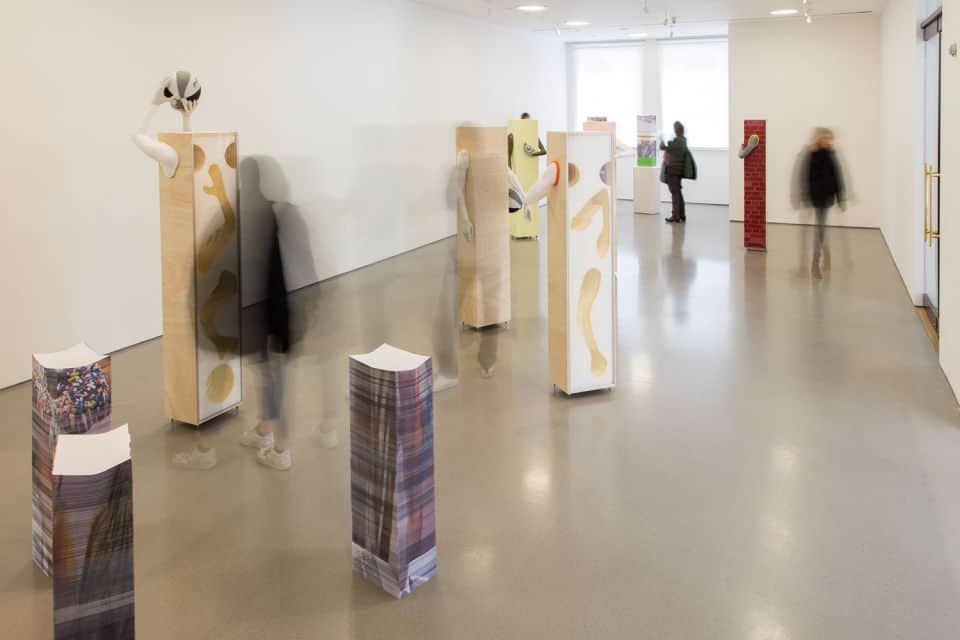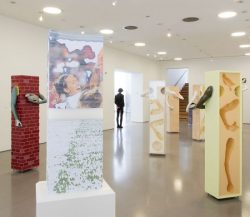
The advice when I arrive at the Henry Moore Institute, is to, first watch the film, ‘Turbo Sculpture’ which is being shown in the gallery at the back of the exhibition. But it is tricky to walk past these striking works without being distracted, but ever the good boy, I do as I am told. And later appreciate that I did so.
After all, the helpful chap on reception did say it will help to put the exhibition into perspective.
The video is the sculptor’s perspective of the time after the wall that divided western Europe from the satellite states of the former Soviet Union came down. The new states that had been part of the former Yugoslavia wanted to remove all reminders of the ousted communist regime. The dilemma was what they should replace them with. It must have been like the debate in London about what should be on the empty plinth in Trafalgar Square. Finding an answer highlights that, unlike the United Kingdom those countries had little independent history because before being part of the Soviet sphere of influence they were dominated for centuries as part of the Habsburg Austro-Hungary empire and before that the Ottoman empire.
The solution that many towns and cities hit upon is, looking at it through English eyes that are influenced by our centuries of independent history, both humorous and sad. Sad because it demonstrates the temporary nature of all the things which make a society want to place a supposedly permanent record of someone in a public place. Yet at the same time it demonstrates our need to make those public statements.
The collection of sculptures of existing works (not created specifically for this exhibition) are influenced by the votive sculptures of ancient Greece that were intended to represent offering to the Gods. The sort of things that are exhibited in museums around the world thousands of years after they were first created. Regardless of where you see those sculptures they are intimately connected with Greece.

Domanovic describes her work as exploring the portability of sculpture. The votives can be dismantled and packed inside themselves for transportation. The paper stacks can be transported via the internet or a memory stick. All you need to recreate them is a printer and a lot of paper and ink. The Leeds votives could even be recycled. This portability challenges, by removing the permanence of the work, the traditional role of sculpture, as a record of a public statement. It creates infinite possibilities for the commissioner of the sculpture to change their mind about what sorts of public statements that they want to make. Perhaps in that way the exhibition reflects the increasingly temporary relationship that we have with culture, history, fame?
On an individual level thinking about this removal of permanence in sculpture raises questions about the elements of life, habits, traditions etc that could be described as permanent features of life and whether they really are that permanent.
The Aleksandra Domanovic; Votives exhibition runs until 11 June 2017 at The Henry Moor Institute, The Headrow, Leeds, LS1 3AH.
Photo courtesy of Aleksandra Domanovic, and the Tanya Leighton Gallery, Berlin
Photographer Jerry Hardman-Jones